As a part of on-going H2020 project (CIRC4Life) and based on the latest discoveries from circular economy, innovation and service design literature, Laurea University of Applied Sciences from Finland has developed CELLL toolkit for 1) co-creating shared understanding of BM (business model) ecosystem, 2) identifying ecosystemic CEBM (circular economy business model) opportunities and 3) defining implementation plans for CEBM development.CELLL toolkit includes also project-planning feature, which can be used to define end-user and other key stakeholder engagement activities for co-creating and testing the proposed CEBMs across the innovation process starting from opportunity identification to large-scale demonstration and launch of the CEBM.The CELLL toolkit is based on a facilitated group board game approach, which uses predefined cards as a visual method of blueprinting business model settings and co-creation activities across all CE and innovation process phases. CELLL is mainly designed for companies to define their CEBMs in multi stakeholder setting, but it can be used also e.g. for CE teaching.
INTRODUCTION
Transition to circular economy (CE) is a complex process that requires a systemic transformation of entire value chains, covering design, production, consumption and reuse phases, so that the value of resources and products can be maintained in use for as long as possible, while reducing environmental impact and increasing societal and economic impacts. Such complex process requires a deep understanding of business processes, value chains, consumption patterns, resource management and waste management practices, in addition to regulatory environment. Often connections between these processes and patterns are missing, especially in industrial sector, where transformation is driven mainly by resource optimization, rather than broader environmental and societal impacts. In addition, transition to CE requires collaboration based on mutual understanding among supply chain partners, which is a long and often complicated process, especially if the supply chain is international and does not belong to the same organization.
Co-creation and design thinking can help companies in their transition towards CE, however the knowledge and expertise of co-creation is often limited in industrial sector, especially among production-oriented SMEs. According to the study conducted by Seikkula (2019) among business partners of Horizon2020 CIRC4Life project, co-creation is considered useful, but too laborious process, in which engagement of stakeholders and understanding their needs is crucial. The study also found that business owners need simple solutions and tools to practice co-creation.
To address the industry needs for simple tools for practicing co-creation in their transitioning towards circular economy, authors developed a CELLL (Circular Economy Laurea Living Labs) toolkit. In the following sections of the article we describe the background of CELLL and methodology behind its development, and present three elements of the toolkit for 1) co-creating shared strategic vision, 2) identifying the key stakeholders and 3) defining ecosystemic CEBMs. We conclude by providing recommendations for CELLL applicability for business, educational, and project purposes.
ORCHESTRATING COLLABORATION AND BUSINESS MODEL DEVELOPMENT IN MULTI-STAKEHOLDER SETTING
CELLL has been developed in response to above defined challenges to facilitate co-creation of Circular Economy Business Models within CIRC4Life project, which aims to aims to develop the following three business models along the product value chain:
- co-creation of products/services,
- sustainable consumption, and
- collaborative recycling and reuse.
Circular Economy Business Model (CEBM) innovations are by nature networked, since they require collaboration, communication, and coordination within complex networks of interdependent but independent actors and stakeholders.
According to Björklund et.al. (2017), collaboration can be defined as transfer of knowledge from one party to another, in an open and safe environment where all actors are giving and receiving valuable information and ideas. This process can also be referred as co-creation, which in the CIRC4Life context is understood as defining and solving shared problems with a systematic approach, in close cooperation with multiple actors with diverse backgrounds. The key challenge is to develop a successful CEBM for all key stakeholders within an ecosystem, by finding ”win-win-win” setting among diverse group of actors. However, orchestrating co-creation towards the proposed setting can be a challenging task.
Multi-stakeholder engagement, which is needed for successful CEBM co-creation, also requires deep and shared understanding of the development process and its benefits, for all parties involved. Creating this shared understanding means alignment of organizational strategies and operations, but it also means developing a common language and clear processes for development work. As people, experts on their respective areas, use often very specific terms and language, and rarely take into consideration that others might be lacking the same ground knowledge on the substance, it can be hard to create mutual understanding and shared goals.
The challenge arises also from the fact, that the capacity of human working memory is limited to 5-9 units (Miller, G. 1956). Moreover, the human brain only allows us to concentrate on average on six things simultaneously and is easily directed to side paths while we are explaining and discussing complex topics, such as circular economy. Thus, a co-created shared strategic vision can be hard to form and is challenged during the process, as all stakeholders have varying interests inside the ecosystem, and independent actors weight and value topics differently. Additionally, the existing combination of different personalities has a major impact on group dynamics, and how a diverse group is able to work together and reach the set goals.
Design thinking methodology, used as a basis for stakeholder engagement in CIRC4Life, proposes using tools which enable outsourcing thinking into tangible and visual form – such as canvases, visualizations, and storyboards – where ideas and complex structures can be easily shared, understood and worked upon by a diverse group of people. These methods can help to prevent miscommunication, and decrease time and efforts needed for sharing and discussing ideas. Design thinking also suggests managing and supporting collaboration in facilitated workshops and by applying comprehensive service design tools. (Von Stamm, P. 2003; Junginger, S. 2007: Stickdorn, M., & Schneider, J. 2010).
CELLL toolkit has been developed for visualizing and structuring CEBM development, by transforming the complex process into simple stages. These stages consist of clear structure and provide relevant hints for completing the given tasks, while simultaneously allowing the process to be modified by the participants to match the scope and maturity of business model (BM) development.
CELLL TOOL DESCRIPTION
The toolkit is based on a facilitated group board game approach, which uses predefined cards as a visual method of blueprinting business model settings, opportunities and co-creation activities across all CE stages (see figure 2.) and innovation process phases. Thus, during the facilitated workshop a group of participants, having complementary expertise across CE value chain, will work together to identify possible options within the industry scope, and select the most valuable approaches for further development. The toolkit consists of two game boards, a number of cards, timeline stripes and markers to modify and add needed elements. All the CELLL elements are reusable, and should cleaned after each usage.
By its nature, the CELLL toolkit follows a modular approach. Thus, the different game modules described below can also be used individually, depending on the stage of the development process as well as the combination of participating stakeholders. Varying on the scope and scale, the duration of the CELLL workshop can range from three hours to few days.
Module 1. Co-creating shared understanding of BM ecosystem
The goal of the first module is to bring together stakeholders representing value chain and other ecosystem actors around certain business/company, and to create a shared understanding of a current business ecosystem.
In the first module of the toolkit, participants create a linear illustration of the current business environment and value stream, by using WHAT, WHERE, and WHO cards. This phase enables participants to understand the current business model and working environment around case company driving the transition towards CE.
WHO cards represent actors in the ecosystem, divided by the Quadruple Helix approach (Carayannis, E., Campbell, D. 2009) into businesses, customers/users, government and academia. WHAT cards help identify actions and value creating processes within the ecosystem. WHERE cards define physical and virtual places in which actions are taking place by actors. The board acts as the ecosystem space in which actors operate.
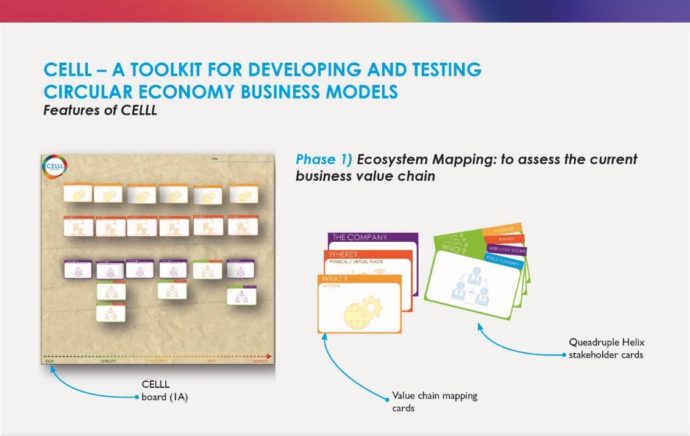 Figure 1. CELLL Module 1 (Purola, A. 2019)
Figure 1. CELLL Module 1 (Purola, A. 2019)
Participants place the cards on the board and comment their choices for the rest of the group. The “captain”, a person selected among the players to chair the game, ensures that agreement is reached among the participants, before the next card is placed on board.
Outcome of the first module is an agreed understanding of a current ecosystem, in other words, supply chain actors and other cooperation partners. Including users is an important part of this phase, as users are often forgotten in value chain mapping.
Module 2: Identifying ecosystemic CEBM opportunities
Module 2 allows companies and their stakeholders to identify and select CE opportunities in different stages of a CE value chain, starting from materials sourcing and circular design and production, to sustainable consumption and collaborative recycling and reuse, as shown in figure 2. For that purpose CELL Circular Board is used as the basis for development work, as presented in Figure 3. CELLL toolkit currently contains over 45 CE opportunity cards, identified from the literature review and from workshops already run with CELLL. These cards are updated systematically, and new opportunities are added.
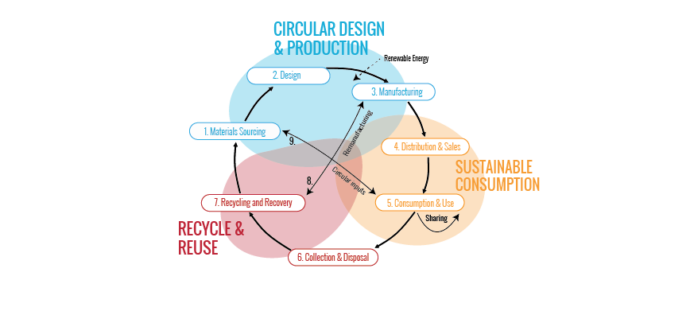 Figure 2. Stages of the circular economy value chain in CELLL (Purola, A. 2018)
Figure 2. Stages of the circular economy value chain in CELLL (Purola, A. 2018)
Participants start by selecting opportunity cards and prioritize them based on a simple “Yes”, “Maybe” and “No” approach, based on suitability and feasibility of implementing CE opportunities based on the general industry requirements. Next, participants go through the selections of “Yes” and “Maybe” cards, in order to make a final selection based on the scope of the project and the available resources. While making the selection, the interconnections between different opportunities are also identified, to ensure that selected opportunities form structured CEBM.
Finally, the selected opportunities are linked with the key stakeholder groups, by adding the identified stakeholders from the current value chain mapped in the module 1, and by defining new stakeholders using the Quadruple Helix stakeholder (WHO) cards.
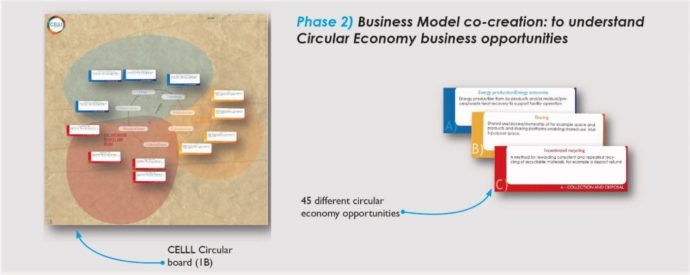 Figure 3. CELLL Module 2 (Purola, A. 2019)
Figure 3. CELLL Module 2 (Purola, A. 2019)
As an additional part of this phase, the new circular value chain can be recreated as described in Module 1, using WHAT, WHERE, and WHO cards. Furthermore, creating a Customer Journey Map is also highly recommended during this phase, as it will allow to test out the feasibility of the proposed business model features from the end-user perspective. Considering this perspective already from the early stages of business model development is valuable, the customer experience being the key competitive advantage for most industry sectors (Meyer, C., Schwager, A. 2007).
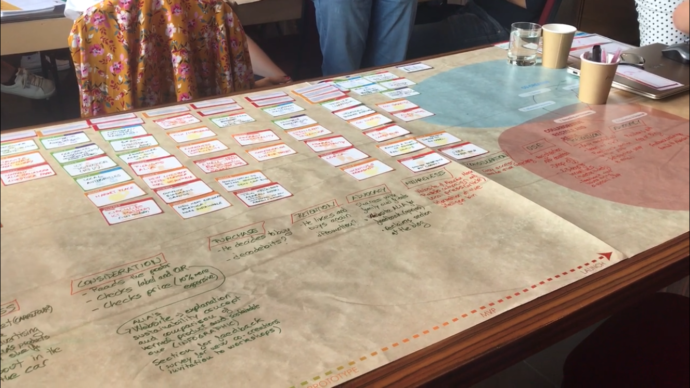 Figure 4. Creating a Customer Journey map on CELLL board during CIRC4Life CEBM workshop (Purola, A. 2019)
Figure 4. Creating a Customer Journey map on CELLL board during CIRC4Life CEBM workshop (Purola, A. 2019)
Outcome of Module 2 gives companies an understanding of development options, and required changes in supply chain in their transition to CE. In addition, it creates an understanding of a customer perspective on value creation, and helps to identify potential pain points and challenges with implementation from a customer point of view.
Module 3 Defining implementation plans for CEBM development
Last Module of CELLL allows companies to plan the implementation of transition, in other words, estimate timeline for transition process, and identify end-users and other key stakeholder engagement activities for co-creating and testing the proposed CEBMs across the innovation process. The module includes transforming and structuring the selected CE opportunities into smaller projects/tasks, and defining relevant actions needed for developing and testing the defined solutions, together with the stakeholders identified during modules 1 and 2.
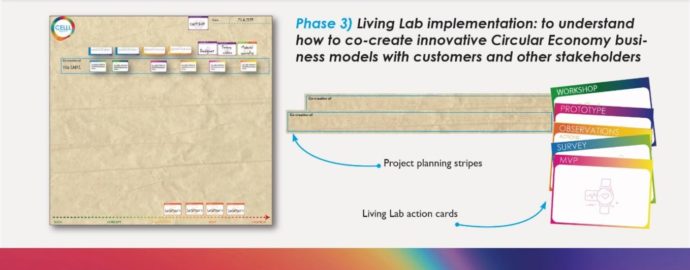 Figure 5. CELLL Module 3 (Purola, A. 2019)
Figure 5. CELLL Module 3 (Purola, A. 2019)
As the implementation methodology for CEBM development, we suggest Living Lab approach, which is based on systematic engagement of users and stakeholders. Thus, to plan the implementation, participants use Living Lab action cards for planning the co-creation and testing activities, from opportunity identification to large-scale demonstration, and launch of the CEBM. At the end of the CELLL process companies have a clear understanding of partners, resources and changes in their supply chain, and can proceed with real-life implementation.
CONCLUSIONS AND RECOMMENDATIONS FOR CELLL TOOLKIT USAGE
Using visual and tangible design thinking tools and service design methodology to transform complex data into a form that is suitable for effective decision-making, as well as having comprehensive methods and tools for managing co-operation, are essential to successful co-creation and shared understanding and vision, especially in the context of complex topics, such circular economy. Furthermore, we believe that CELLL toolkit, now tested in a form of working prototype, can be developed into a product, which will have the capacity of supporting companies and organizations in the complex transformation towards circular businesses and more sustainable way on perceiving the world.
CELLL modules cover most important parts of BM development: mapping current ecosystem and stakeholders, identifying new CE opportunities, creating new CEBM and identifying new stakeholders for implementation, and planning the development process based on Living Lab methodology.
CELLL is designed to support different types of organizations, but primarily industrial SMEs who need simple, fast and easy to use solutions for transitioning towards CE. The business value of CELLL comes from a structured and facilitated process of BM co-creation that allows for effective cooperation and decision-making. In addition, access to our collection of CE business opportunities allows companies to investigate CE strategies at different stages of value creation, thus discovering new business opportunities and potential new markets.
The toolkit includes also project-planning feature, which can be used to define end-user and other key stakeholder engagement activities for co-creating and testing the proposed CEBMs across the innovation process starting from opportunity identification to large-scale demonstration and launch of the CEBM. This project planning feature can be used to plan large-scale demonstration projects around CE, including consortium building and implementation plans.
Finally, CELLL is an excellent learning tool, which can be used in educational purposes, for example, to raise awareness about CE opportunities among business students; to be used as a tool in decision-making and change management studies; and to facilitate service design capacity building in service innovation studies. As the tool is designed to be used as a team exercise, it also facilitates teamwork and social communication skills, facilitate dialog, interactions and common understanding of complex issues, helps develop conflict resolution skills, time management and diversity management skills.
The CELLL toolkit was developed at Laurea University of Applied Sciences with the support of H2020 CIRC4Life project: H2020-IND-CE-2016-2017/CIRC-2017/TwoStage CIRC4Life-776503A circular economy approach for lifecycles of products & services.
References
- Carayannis, E., Campbell, D., (2009). ’Mode 3’ and ’Quadruple Helix’: toward a 21st century fractal innovation ecosystem” (PDF). Int. J. Technology Management. Retrieved from: ’Mode 3’ and ’Quadruple Helix’: toward a 21st century fractal innovation ecosystem”
- Junginger S. (2007)., Learning to design: giving purpose to heart, hand and mind. Journal of Business Strategy, 28(4), 59-65.
- Levén, P., Holmström, J., (2012) Regional IT innovation: a living lab approach, p. 6.
- Int. J. Innovation and Regional Development, Vol. 4, No. 2, http://jonnyholmstrom.com/wp-content/uploads/2017/06/Leven-and-Holmstrom-2012.pdf
- Meyer, C., and Schwager, A., (2007), ”Understanding Customer Experience”, Harvard Business Review, Vol. 85 No. 2, pp. 117-127.
- Miller, G. A., (1956). The magical number seven, plus or minus two: Some limits on our capacity for processing information. Psychological Review. 63 (2): 81–97.
- Ståhlbröst, A. Holst, M., (2012) Living Labs Methodology Book.Retrieved from https://www.ltu.se/cms_fs/1.101555!/file/LivingLabsMethodologyBook_web.pdf
- Stickdorn, M., & Schneider, J., (2010). This Is Service Design Thinking: Basics, Tools, Cases. Amsterdam: BIS Publishers
- Von Stamm, B., (2003). Managing Innovation, Design and Creativity. Wiley & Sons.
- Seikkula, S., (2019), Benefits of co-creation in business model development (interview summary), Power Point presentation, unpublished.